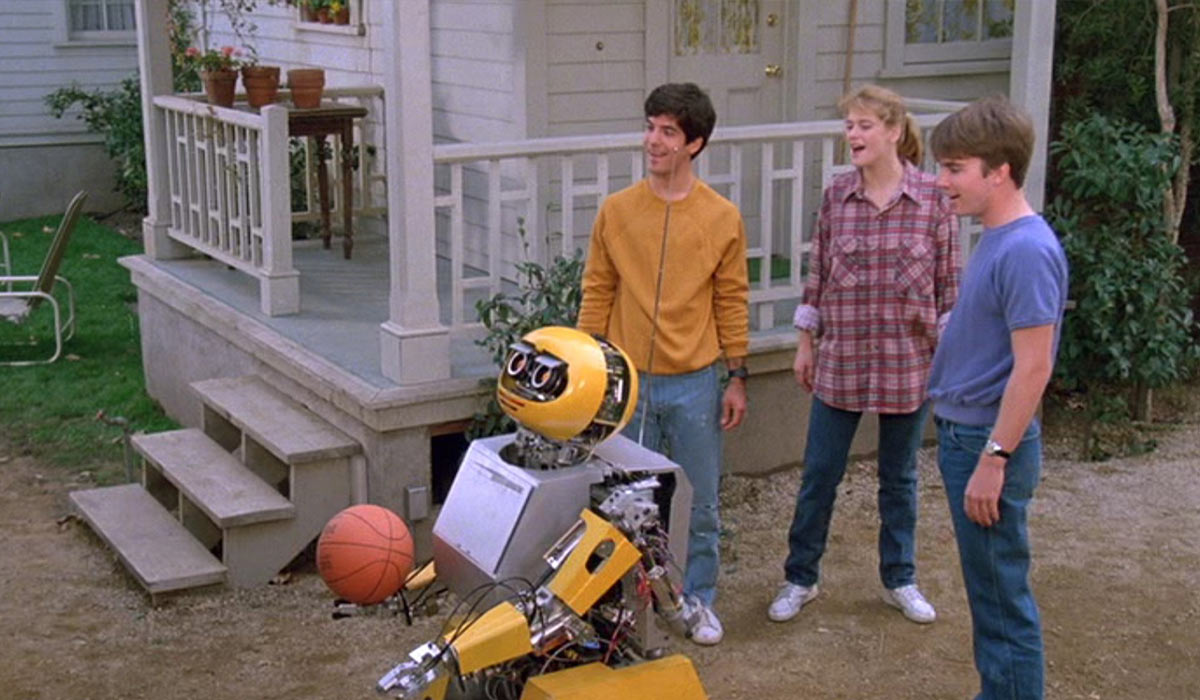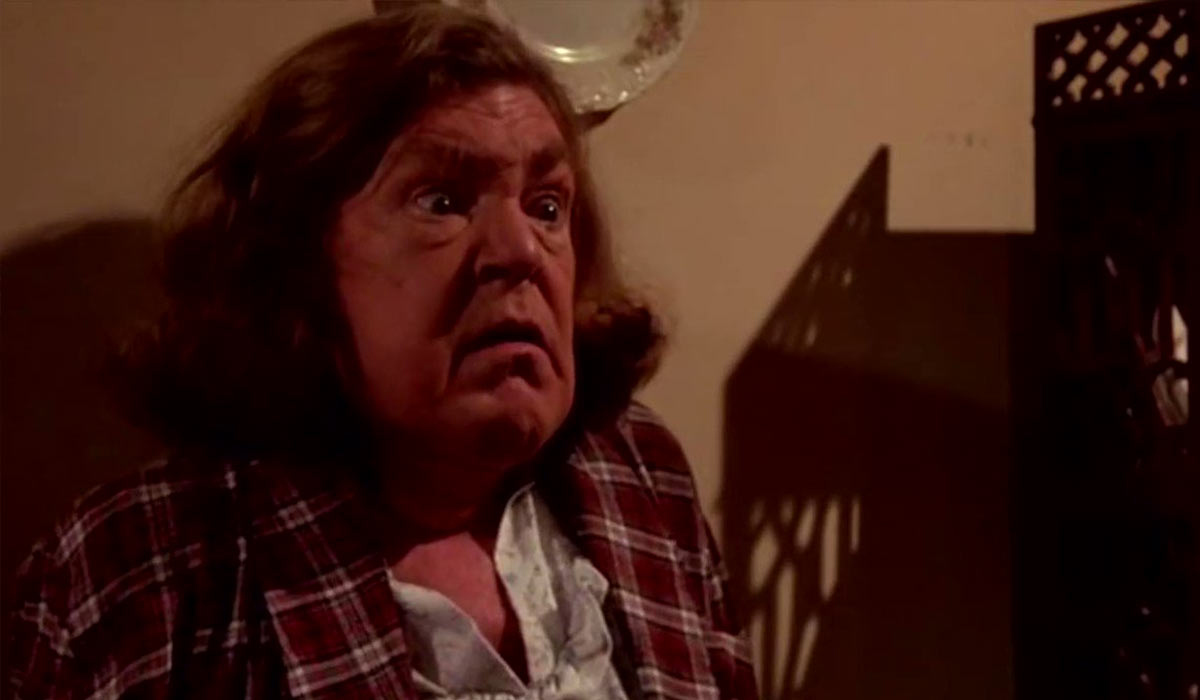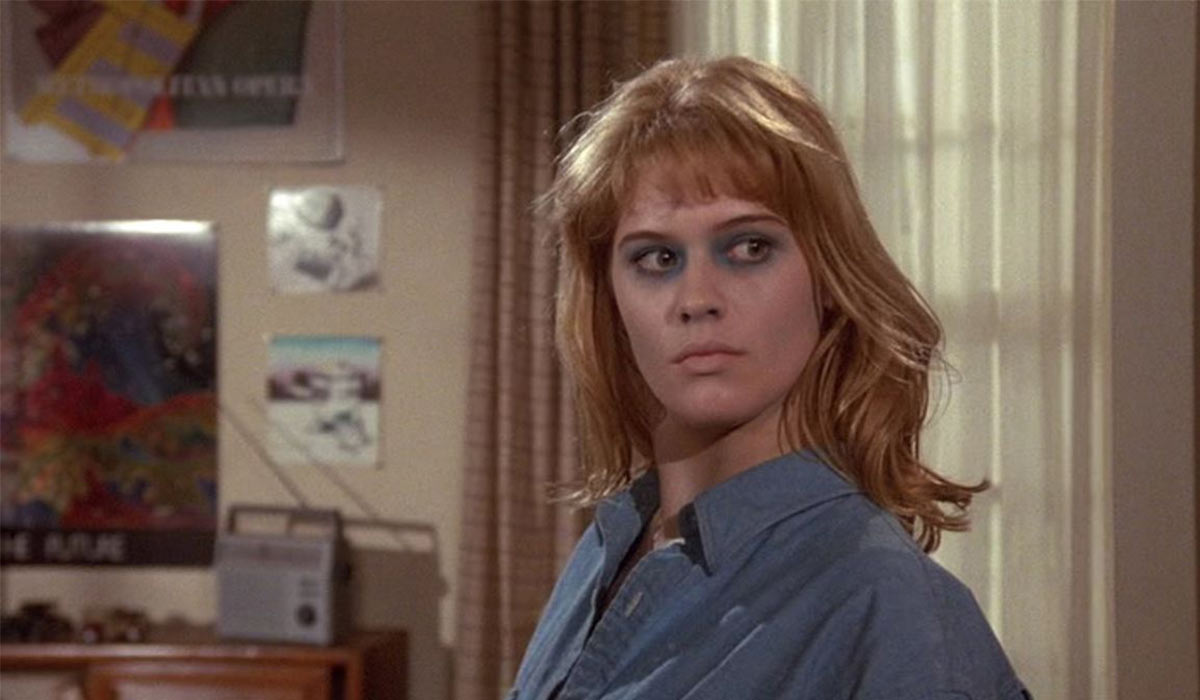DEADLY FRIEND's Source Novel Was A Basketball-Less Bummer
While I obviously didn't know who he was at the time, the first Wes Craven movie I ever saw was DEADLY FRIEND, thanks to frequent cable showings when I was about seven years old. I'm not sure if anyone else did this, but I would frequently watch the end of movies on HBO or whatever; if it started at 3pm and I turned it on at around 4, it didn't matter to me that I had no context for anything I was seeing (sometimes I'd even RECORD the films like this, which is why I have seen the last 35 minutes of SPACEBALLS about 100x and the first hour maybe three times). As it turns out, DEADLY FRIEND was an ideal film for such an odd practice, as (like my beloved SHOCKER) it takes a while for Craven to get to the part of the film that would be described in a single line.
In this case, that'd be "A killer robot girl murders everyone who wronged her," which is confined to the third act. In order to *get to* the killer robot girl, first we got to meet and fall in love with a robot (named BB and voiced by Roger Rabbit himself, Charles Fleischer) that is then "killed", and also do the same for Sam (Kristy Swanson), the literal girl next door to our super genius protagonist Paul (Matthew Labyorteaux). The movie is half over before she's even killed, let alone revived using BB's computer chip, so since I was only seven at the time (and thus not yet interested in girls) all the puppy dog romance stuff wouldn't have appealed to me anyway. Hell, it's possible I wouldn't have even gotten to the "good stuff" if I was watching it from the beginning - I would have gotten bored, turned it off, and watched FRIDAY THE 13TH PART 4 again instead.
But over the years, as I discovered more of Craven's filmography (including, yes, SHOCKER, plus THE PEOPLE UNDER THE STAIRS and that one movie with the guy in the brown hat), I'd also read FANGORIA interviews with the master and discover that DEADLY FRIEND was something of a sore spot for him, with the things I liked (i.e. the infamous basketball kill) being added to the film against his wishes. In a rare reversal of filmmaker and studio intentions, Craven wanted to make something PG rated, a science-fiction themed doomed love story - his point of reference being what John Carpenter was able to do with STARMAN, in fact. However, the studio, having landed Craven after the success of NIGHTMARE ON ELM STREET, wanted to capitalize on his burgeoning brand and load the film with gory kills. Being a professional, he shot these scenes himself rather than walk off and let someone else do it, but more or less disowned the film once it was finished.
So when Scream Factory announced the film would be joining their prestigious lineup, there was hope that they'd be able to find Craven's original cut of the film, without all the gore and with more focus on the love story between Sam and Paul. Alas, as is often the case, they couldn't find any of the footage in any form, so just as we've had for 35 years, the only evidence of their existence is in the trailers and stills from the production; mere glimpses of the stronger film it likely was before the studio demanded ill-fitting violence (which, of course, was then largely dialed back by the MPAA anyway). However, I took the opportunity to finally crack open FRIEND, the Diana Henstell novel from 1985 that the film was based on, to see if I could get a better sense of how Craven's film might have played when it was presumably closer to its source.

Well, that idea went out the window literally on the first page, as we meet Paul and he is nothing like the actor who played him in the movie. Novel Paul is in fact usually called Piggy (even by his own mother in internal monologue!), a reference to the LORD OF THE FLIES character who shares his fat, short, bespectacled appearance. Also he's barely 13 years old, a few years younger than Paul is supposed to be in the movie (the conventionally handsome, dark haired Labyorteaux himself was 19 at the time of production), with Sam being even younger - it's mentioned she's not even 12 yet, a far cry from movie Sam's age, old enough to have "developed" (something crudely admired by Paul and his friend Tommy). Long story short, the novel focuses on a little kid having his first crush and not even knowing how to process those feelings, let alone the ones he has when she is killed by her abusive father, whereas the movie's version ages everyone up into "he should know better" territory.
However the weird thing about the movie is that while they aged everyone up, they left their actions relatively intact. If you account for the usual streamlining of a book when it becomes a movie, it's actually pretty faithful as far as the bullet points of the narrative are concerned. Sam's death is identical (her dad knocks her down the stairs, though in the book she dies instantly instead of being brain dead), the old lady across the street serves the same capacity, Paul's mom is the most oblivious woman on the planet, etc. Even some smaller details, like BB's design and Sam coming over for Thanksgiving due to her drunk dad not bothering to prepare anything, survived the translation from page to screen. But by making everyone older, Craven's film has elements that simply don't work as well - including the primary plot point of the protagonist resurrecting his would-be girlfriend without any sort of plan of what to do with her after that. It's a kids' fantasy film at heart, but with near 20 year old actors going through the childish motions. Even the very idea of him having a robot follow him around everywhere is kind of odd when he's clearly old enough to drive (likewise, his same-aged friend has a paper route, denying the opportunity to some 12 year old who can't get a real job!).
The book also allows you into "Piggy's" head and explain why he can't simply rebuild BB after it's destroyed (Sam's dad is actually the one to do it here, with the old lady across the street merely helping him lie to the police about what happened). Even the mom is pretty devastated about it in the novel, and when someone actually asks "Why not just rebuild him?" it is likened to replacing a dead pet by buying one of the same color and breed - it might look the same, but it wouldn't BE the same, because the real one is dead. In the movie they basically skip past that dilemma and go almost instantly into the events leading to Sam's death, with Paul seemingly doing just fine without his robot pal. In the book losing Sam is kind of a last straw for his emotional turmoil (which is already considerable as he is also dealing with his parents' divorce as well as accidentally causing the death of a classmate during a science lab mishap, two elements completely absent from the film), but here he seems fine until she dies, at which point he turns on a dime.

Maybe the tragic element would have worked if Craven was left alone to make the film he wanted to make, but again by aging everyone up it would have been an uphill battle for him. A 12 year old boy who hasn't even experienced puberty not understanding the implications of what he had done and just trying to "fix it" using the brains he's been gifted with and admired for (basically giving him a superiority complex) is something I buy; a 16 year old not so much. There's a real heartbreak to spending 300 pages in the mind of a child who can't process any of the emotions he's constantly forced to deal with; he's not even sure what kissing is all about but feels he wants to kiss Sam, a far cry from the movie's version who comments about her breasts. Obviously the casting was not part of the reshoot process, so I'm curious what the thinking was here - seems to me that the added gore wasn't as damaging as inserting high school juniors into a story meant to be experienced by the eyes of a 6th grader.
And that's not to say that a teenaged Frankenstein tale wouldn't work - it's just that they kept all the other story elements intact, rendering the characters' actions bewildering when they're meant to be kind of pitiful. When Piggy and Tommy (also given an unfortunate nickname, "Slime") have to bring Sam's body from the morgue to his lab, part of their struggle is that they don't know how to drive and are too small to carry her weight on their own, so you almost feel kind of embarrassed and wanting to help them even though it's definitely way way wrong. There are a lot of "Maybe I shouldn't have done this" kind of moments even before Sam starts killing her offenders, whereas the movie never bothers to address any kind of struggle - internal or external - on Paul's part at all. He gets into a fight with Tommy about it, but that's about it (and nothing compared to the book, where Sam ultimately kills him too, further breaking Piggy's spirit as now he's lost his only other friend as well).
It goes without saying that the ending is different; the "A scary looking robot comes out of Sam's skin and kills Paul" scene was added at the insistence of the producer and hated by nearly everyone else. It's not fully known what Craven's original ending entailed; Sam being in a white dress seemed to play some part of (a wedding?) but details are sketchy at best and, again, they couldn't locate even a VHS copy of the footage like they've been able to for some of the other notoriously mangled films. But being that it's a studio film, we can assume it was never going to end like the book, with Sam plummeting over a bridge during a scuffle with Piggy (trying to stop her from wreaking further havoc after killing Tommy), and then, seeing no other choice for himself, Piggy jumping to his own death after her, fulfilling the "Frankenstein meets Romeo & Juliet" promise of what was likely the starting concept for the novel in the first place. It's a truly sad ending, in part (again) because of the younger age but also because it shows the lengths he was willing to go in order to have Sam back in his life, a need/obsession the movie's version never quite manages.
.
Long story short, the tragic elements of Henstell's novel were lost both due to the casting and the studio interference, so I'm sure fans of the book were left disappointed and/or angry with the results. But apart from the book, on its own terms, I feel the movie isn't nearly as bad as some (even Craven himself) will have you believe; it's like a cheesy after school special but with random gore, making it entertaining on its own (albeit not as intended at times) and hardly the worst thing with the filmmaker's name on it (looking at you, HILLS HAVE EYES 2! Either of them!). I particularly like that BB legitimately looks like something a teenager would put together as opposed to some perfect and slick thing, and Swanson was a perfect casting choice for this role.. Yes it's a shame that the most famous part is something Craven didn't want in there at all, but as "it is what it is" kind of messy genre movies go, there are much worse ways to spend 90 minutes. And I assure you, if they stuck to the book, there would be no joy or levity whatsoever; it's just kind of a bummer from start to finish. Thank you, head-smashing basketball, for making things a little livelier in these parts.





